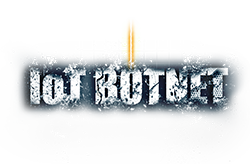Since the first Denial-of-Service (DoS) attack was launched in 1974, Distributed Denial-of-Service (DDoS) attacks have remained among the most persistent and damaging cyber-attacks. Let’s examine how these attacks have evolved and how your company can mitigate them:
DDoS in Review
A Denial-of-Service (DoS) attack is an attack targeting the availability of network resources and applications. Unlike other kinds of attacks, DoS attacks’ primary goal is not so much to infiltrate data, but rather to slow or take down altogether a network device, an application, and/or a website. A Distributed Denial of Service (DDoS) attack is the most common variant. In “Eliminating Single Points of Failure, Part 1” Radware’s Louis Scialabba reviews how DDoS attacks work and some instances where DDoS attacks have been in the news (surprise – it’s more often than you think).

What Risks Do DDoS Attacks Pose to Enterprises?
Denial-of-Service attacks affect enterprises from all sectors, all sizes, and all locations. These types of attacks are hard to detect and block since the attack traffic can be easily confused with legitimate traffic. In “Eliminating Single Points of Failure, Part 2,” Louis looks at the impact of DDoS attacks, type of attacks, and some of the mitigation strategies businesses can employ.
[You might also like: DDoS Attackers Call for DDoS Defenders]
Speaking of Mitigation…
According to Radware’s Carl Herberger, “attack mitigation is not a core competency of modern day security programs.” In “Hey there Security Professional….How do YOU mitigate attacks?” Carl looks at six key attributes that hacktivist groups look to exploit in their victims, and why companies need to evolve their security strategy at the speed of cyber security evolution.
What Kinds of Attacks Are We Dealing With?
“Ultra-adaptive hackers” have given rise to five particularly nasty attack techniques in 2017, including Advanced Persistent DoS (APDoS), DNS Water Torture attacks, SSL-based attacks, and more. In Part 1 and Part 2 of this blog series, Carl takes a deep dive into these attack types and shares what you need to know to protect your organization from them.
How Do You Know If You Are Vulnerable to These Attacks?
If your company is doing the same thing today that you were doing even a year or two ago, that model is no longer effective. Many forms of attacks are known, but the most dangerous are the unknown threats that we haven’t faced yet, which are cropping up every single day. It is time for security professionals to audit their current processes and determine where there might be vulnerabilities. In Part 1 and Part 2 of this series from Carl, he looks at which vulnerabilities need to be tested and why.
DDoS-as-a-Service
Since the beginning of 2016, Radware’s ERT Research division has been monitoring a number of DDoS-as-a-service tools available on both the Clear and the Darknet. These services make it possible for even novice hackers to purchase attack services and launch large-scale DDoS attacks at not much cost. In “The Growth of DDoS-as-a-Service: Stresser Services,” Radware’s ERT Researcher Daniel Smith breaks down the types of services available.
[You might also like: The Evolution of the Dark Web]
Happy Anniversary?
One of the most well-known DDoS attacks to happen in recent memory was the Dyn attack of 2016. One year ago, an attack was launched that disrupted service on many popular web sites. This attack was the work of the Mirai botnet, which enslaved hundreds of thousands of IoT devices that were then used to launch additional attacks. In “The Dyn Attack – One Year Later” Ron Winward analyzes the attack to see how a similar attack could occur in the future.
Conclusion
The motives for these attacks may differ in each case, but a robust security strategy is important to ensure that your company is protected from these threats. The threat landscape is constantly changing, and as we learned from the Dyn attack, you won’t always see an attack coming or know what it will look like. Knowledge is power – arm yourself with the resources to protect your business.

Read "Top 9 DDoS Threats Your Organization Must Be Prepared For" to learn more.
Download Now